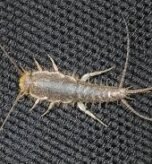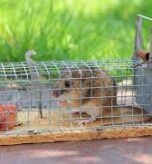Gastropods, a group that includes snails and slugs, represent the largest and most diverse class within the phylum Mollusca. They exhibit an extraordinary array of dietary preferences that allow them to thrive in various habitats. Understanding what do snails eat is crucial for appreciating their pivotal roles in ecosystems, from decomposition to specialized predation. This guide delves into the intricate feeding mechanisms and varied diets of these fascinating molluscs.
How Do Snails Eat? The Radula Explained
A distinctive feature across almost all gastropods is the radula, a chitinous ribbon armed with rows of tiny teeth. This specialized organ is fundamental to how they process food.
The Radula: A Snail’s Unique Feeding Tool
The radula functions by scraping or cutting food. It is drawn over a cartilaginous structure, the odontophore, moving back and forth like a chainsaw chain. This action breaks off bits of food, which are then pulled into the esophagus for digestion. In carnivorous species, the radula teeth are often long and sharp, perfectly adapted to grasp and pull prey into the mouth.
The Snail’s Digestive System
A snail’s digestive system is a complex set of organs adapted to process many different food types. Digestion begins in the mouth, where saliva helps break down food. The main part of digestion occurs in the stomach, with digestive fluids from a large gland called the hepatopancreas. This gland produces enzymes that break down carbohydrates, proteins, and lipids. It also plays a vital role in absorbing nutrients and storing calcium for shell building.
What Do Snails Eat? A Look at Their Varied Diets
Snails exhibit a wide range of feeding habits, reflecting their remarkable adaptability to diverse environments.
What Do Herbivorous Snails Eat?
Most snail species are herbivores, consuming a wide variety of plant material. Their diet includes:
- Leaves, stems, and bark
- Seedlings and fruit
- Fungi and algae
The common garden snail, for example, is a strict herbivore in captivity. However, some herbivorous snails, like the Giant African Snail, can become significant agricultural pests by consuming valuable crops.
What Do Carnivorous Snails Eat?
A notable group of snails consists of carnivores that feed almost exclusively on other animals. European carnivorous snails primarily eat earthworms, insect larvae, and other snails or their eggs.
These predators have developed unique hunting techniques:
- Radula Capture: Some species use their long, sharp radula teeth to grab prey like earthworms and pull them into their mouths.
- Acid Secretion: The Sicilian predator snail secretes a mucus enriched with carbon dioxide. This dissolves the shell of its prey, allowing it to consume the inhabitant.
- Prey Tracking: The rosy wolf snail uses elongated lips to track smaller snails along their slime trails. It actively hunts them, even crossing water and climbing trees.
- Cannibalism: Some carnivorous snails, like the common cannibal snail, will feed on their own kind.
What Do Omnivorous and Detritivorous Snails Eat?
Many land snails are omnivores or detritivores, which means they consume a combination of plant matter, fungi, and decaying animal matter. As scavengers, they play an essential role in nutrient cycling. For instance, pond snails help maintain water clarity by consuming decaying plant debris and dead fish. Decollate snails are known to hunt other snails and slugs but also eat some plants.
Nutritional Needs: What Snails Eat for Optimal Health
To ensure optimal health and development, snails require specific nutrients, particularly calcium and protein.
Why Calcium is a Critical Part of a Snail’s Diet
Calcium is essential for building and maintaining a strong shell. In captivity, you can provide this through a natural cuttlebone or finely ground eggshells sprinkled on their vegetables. Wild snails often ingest calcium-bearing minerals or even bite rocks to get this nutrient.
The Importance of Protein in What Snails Eat
Even snails considered herbivores are not naturally vegetarian. They require an animal-based protein source about once every two weeks. Recommended protein sources include feeder insects like bloodworms or mealworms.
What Foods Are Harmful to Snails?
Certain foods are toxic to snails and should be avoided.
- Salt: Salt is highly toxic to snails, even in small amounts, as it causes dehydration and cellular damage.
- Processed Foods: Packaged foods, “snail mix,” and food for other animals are not suitable.
- Sugar: Snails have difficulty digesting sugar.
- Grains: Foods like rice, pasta, and bread can cause bloating.
- Onion and Garlic Family: These are toxic to snails.
- Citrus: Acidic fruits can irritate their digestive system.
Snail Feeding Behavior
A snail’s feeding behavior is influenced by its environment and physiological needs.
When and How Snails Find Their Food
Land snails are most active at night or during damp weather because they need moisture to crawl. They have a well-developed sense of smell and use chemoreceptors on their tentacles to locate food. They can sense chemical odors in the air and persistently track them. This chemical sense is the primary way they find food in their environment.
Conclusion
The answer to “what do snails eat?” is remarkably diverse. Their diets range from generalist herbivores to highly specialized carnivores with unique hunting strategies. Their versatile radula and specialized digestive systems allow them to efficiently extract nutrients from a wide array of foods. Understanding their dietary needs, including what to avoid, is vital for their well-being in captivity and highlights their significant contributions to ecosystem health, from decomposition to maintaining biodiversity.



